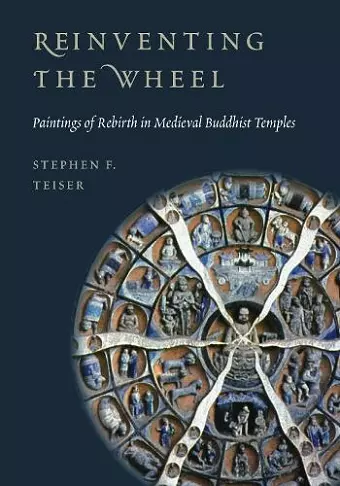Reinventing the Wheel
Paintings of Rebirth in Medieval Buddhist Temples
Format:Hardback
Publisher:University of Washington Press
Published:23rd Mar '07
Currently unavailable, and unfortunately no date known when it will be back

A milestone in the scholarship on Buddhism. This book will remain a standard and definitive account of the subject for a long time to come. It is hard to imagine that any serious student of Buddhism can afford to neglect this book. -- Eugene Wang, Harvard University
Explores the history and varied interpretations of the Wheel of Rebirth, a circle divided into sections depicting the Buddhist cycle of transmigration. This work shows how the metaphor of the wheel has been interpreted in divergent local traditions, from India to Tibet, Central Asia, and China.
Awarded the Prix Stanislas Julien by the Academie des Inscriptions et Belles-Lettres
The Wheel of Rebirth is one of the most basic and popular images in Buddhist visual culture. For nearly two thousand years, artists have painted it onto the porches of Buddhist temples; preachers have used it to explain karmic retribution; and philosophers have invoked it to illuminate the contrast between ignorance and nirvana. In Reinventing the Wheel, noted scholar Stephen F. Teiser explores the history and varied interpretations of the Wheel of Rebirth, a circle divided into sections depicting the Buddhist cycle of transmigration.
Combining visual evidence with textual sources, Reinventing the Wheel shows how the metaphor of the wheel has been interpreted in divergent local traditions, from India to Tibet, Central Asia, and China. Teiser deftly shows how written and painted renditions of the wheel have animated local architectural sites and religious rituals, informing concepts of time and reincarnation and acting as an organizing principle in the cosmology and daily life of practicing Buddhists.
Engaging and accessible, this uniquely pan-Buddhist tour will appeal to anyone interested in Buddhist culture, as well as to scholars of religious studies, art history, architecture, philosophy, and textual studies.
Teiser . . . has a talent for explaining difficult concepts from the basics, and he includes references to popular or mass-media forms of contemporary Buddhism. His book is packed full of fascinating details and enlivened with translations of Buddhist narratives, legends, and miracle tales. This is a fine example of scholarship from the leading edge of the field of Buddhist studies. It will be appreciated and enjoyed by all those interested in the communication of ideas and the religious function of painted images.
* History of Religions *[An] extraordinary book-length project . . . . Without question, Teiser has an extraordinary command of the material; he offers a rich, multilayered, multifaceted analysis that benefits from careful reading and rereading . . . . his methodological synthesis of visual and literary sources has significantly advanced the field of Buddhist studies, bridging the divide between Buddhist images and texts with a more productive collaborative and contextual analysis. This is a very important book that will long remain an enormously valuable resource to scholars and students.
* Art Bulletin *[An] erudite and well-written study, one that deserves to be used as both a basic reference for the representation and history of wheels of rebirth as well as a methodological model for the study of Buddhist art.
* CAA Reviews *Groundbreaking. . . . The gorgeous visuals, detailed maps, and line drawings materially herald an exciting new phase in Buddhology, pronouncing a long-awaited, mature marriage between art history and Buddhist studies. . . . Teiser has radically changed scholarly discourse and understanding. . . . A highly engaging, in-depth treatment of an important Buddhist symbol, this exquisitely produced book has much to offer to specialist readers and undergraduate students.
* Journal of Chinese Religions *With keen aesthetic discernment, extensive historical scholarship, and sensitivity to Buddhist spirituality, this work seamlessly studies all significant aspects of the Buddhist wheel found in old Buddhist temples while bringing in relevant dimensions of Buddhist spirituality. Art, symbology, history, culture, and spirituality are interwoven in an engrossing, enlightening manner.
* Midwest Book Review *A provocative and reliable account of an image that found its way from India to China in the medieval period and continues to play an important role in Buddhist practice and education in Tibet today.
* Harvard Journal of Asiatic Studies *[This book] succeeds through an earnest engaging style and promises to garner in an exquisitely crafted production a wider audience for its subject.
* Journal of Asian HistoISBN: 9780295986494
Dimensions: unknown
Weight: 1247g
336 pages